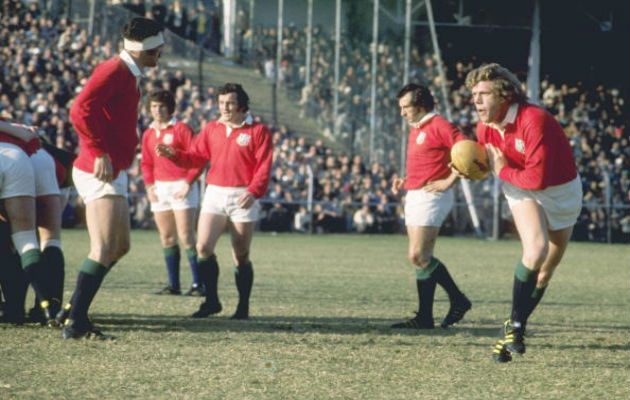Fergus Slattery represented Ireland over 15 seasons, winning 61 caps. The openside was considered one of the greatest of his time
Major teams: University College Dublin, Blackrock College
Country: Ireland
Test span: 1970-84
Ireland caps: 61 (61 starts)
Lions caps: 4 (4 starts)
Test points: 12 (3T)
With an all-court game that would allow him to thrive in the backs if he so chose, it was as a loose forward that he made his name.
Hailing from Dun Laoghaire, he played his schools rugby for Blackrock College, Dublin before graduating to Blackrock RFC, where he spent his senior years. He had his first run out for Ireland in 1970, with his form proving good enough to see him picked for the 1971 Lions squad bound for New Zealand. In the event the emerging 22-year-old saw it as a learning experience as Wales’ John Taylor was preferred for the Test series.
Two years later he played a key part in the epic Barbarians-New Zealand game, scoring in a clash most notable for Gareth Edwards’s ‘best-ever’ try.
By 1974, Slattery was too good to ignore. When the Lions toured South Africa, he formed a brilliant back row with Mervyn Davies and Roger Uttley, with his foraging and brilliant support play coming to the fore.
After a superb tour in which the side was named ‘the Invincibles’, Slattery was left with one frustration. In the dying minutes of the final Test, with the scores tied at 13-13, he crossed the line thinking he’d won the series, only for the referee to rule it out as he didn’t see a clear grounding of the ball.
Slattery captained Ireland on 18 occasions, with one of his greatest achievements a first unbeaten tour to Australia and a series win. He was feted for his fearless work around the fringes, clever link-up play and blistering pace that saw him reaching the opposition centres as fast as the ball.
He won a Triple Crown for Ireland in 1982 as captain before playing his final game against France two years later.
In retirement, Slattery established himself as a successful property developer and an in-demand speaker on the after-dinner circuit.





